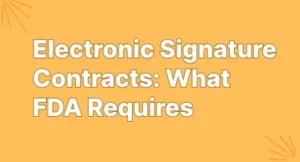Make an Impression: Unlock Your Unique Signature
Introduction
A signature is a mark or symbol representing you. It is a unique, personal identifier that is attached to your identity to show ownership or to certify something. It can authenticate documents or express your approval of an agreement. It is important to take care when choosing and creating a signature as this will be used to confirm and certify whatever you sign.
Your signature is an expression of yourself, and it should represent you and your style. It is important to select a signature that will be easy and comfortable to write, and one that you can replicate easily in a variety of settings. Creating your own signature involves identifying unique ideas, gathering materials, laying out the design, and practicing writing the signature until it looks perfect.
Research Unique Ideas
Creating a unique signature is an important way to express your individual identity. Researching ideas and motifs for your signature is an essential part of the creative process. The possibilities are endless and can include unique art forms, other signatures, and any symbols or motifs that may be included.
If you are looking for inspiration, it is best to browse art galleries or observe the signatures of others. Try to find something eye-catching and appealing that resonates with your personality and style. Keeping a list of ideas will help you to narrow down what elements you would like to include in your signature.
Take time to brainstorm and sketch out your ideas. This will help to refine your signature and provide you with a clear starting point before you begin the actual drawing process.
Gather Basic Materials
When beginning to create your own signature, it is important to gather the necessary materials in order to create the envisioned design. This includes paper, a writing utensil — either a pen or markers — and any other material you may need to complete your signature.
- Paper: It is best to use thick paper, such as poster board or cardstock, to ensure that the signature does not blur or smudge.
- Writing Utensil: An effective writing utensil should be used to ensure that the signature stands out. Consider using a fountain pen, calligraphy pen, or marker for a crisp look.
Gathering the right materials that will give you the desired result is essential to creating a unique and personalized signature.
Layout the Signature
Creating the perfect signature can be a tricky honor. A memorable signature is usually made up of a few, simple elements. To layout the signature, start by deciding the shape and size of your signature. Consider the placement of a given letter or word in your signature and figure out the best way to write it. You can also look into different art forms, such as calligraphy, for inspiration.
The signature should include elements that represent your identity. Think creatively and decide on symbols or motifs that may best represent you. Each letter should be written with finesse and care, as this signature will be used frequently on important documents. Don’t forget to add any extra pen strokes or embellishments to give the signature an extra edge.
Drawing a signature doesn’t just happen overnight. Perfecting your signature requires practice, practice, and more practice! To ensure the signature looks perfect every time you write it, you’ll want to practice drawing it multiple times on paper. To do so, you’ll need to gather the materials. Get a piece of paper and a pen or marker to use as your “signing tools”. Then, you’ll want to lay out your signature in the desired shape and size that is appropriate for whatever purpose it is used for. Consider which elements you would like to include in your signature. Some common elements to include are your first name, last name, middle name, or initials depending on how long or short you’d like your signature to be.
Once you have laid out your signature, start practicing by slowly drawing it with your pen or marker, writing it repeatedly until you feel comfortable with the way it looks when written. Don’t worry if it takes a few tries for you to get it right, that is normal! Keep practicing each letter one at a time until you are happy with the flow and overall look of your signature.
Next, you will want to refine your signature by checking for any inconsistencies or flaws, and making adjustments where needed. Using a ruler and your preferred tool, carefully go over each letter and adjust the thickness or angles of curves as needed. A great way to get an idea of how it should look is to ask someone to review it, so that you can further refine your signature based on their feedback.
Once you are satisfied with your signature, it is time to finalize it. Gather all of the materials you need to finish the signing process and make any necessary adjustments. Now you have a beautiful, unique signature to represent your identity!
Refining Your Signature
Having a signature is more than just signing your name, it’s a declaration of your identity. That’s why it is important to make sure your signature looks unique, polished and vibrant. When creating your signature, it is essential to make sure that you take the time to refine it until you are completely satisfied with your final product.
When refining your signature, it is important to make sure it is the same size and shape each time. Once you have developed a consistent size and shape, it is time to emphasize certain aspects of the signature. Depending on the style of signature, you may want to draw larger letters, or add different font weights or widths to give it a more bold look. You can also choose to add a flourish or symbol at the end of the signature to make it unique.
Finally, practice drawing the signature multiple times. This will help you become comfortable with the signature so that it seems natural each time you sign. It is important to remember that a signature is an expression of your individuality. Take the time to find the perfect signature and always keep refining it until you feel proud of it.
Finalize
Once you’ve gotten comfortable with your signature idea, it is important to organize and finish the signing process. It is helpful to have a friend or family member review your signature and give feedback on it. If any adjustments are needed, make them so that your signature looks natural and easy to write.
The next step is to collect the materials necessary to sign a document or create a personalized signature in a scrapbook or similar project. Be sure to have the right pen or marker stocked up and get a good quality paper or card stock to work with.
Finally, when creating an electronic signature for digital use, save the image in a universal and recognizable format that can be used multiple times. To do this, save your signature as both a jpeg and a png file.
Conclusion
Having a signature that reflects your personality and is unique to you can be an empowering exercise. It can give you confidence in expressing yourself and recognizing your own individuality. Researching unique ideas for your signature, gathering materials, practicing drawing it, and refining it could make the process of creating a personalized signature easier and enjoyable.
When creating your signature, keep in mind the importance of having a signature that genuinely reflects your identity. Signature ideas come from a wide variety of sources such as art forms, other signatures, and symbols or motifs. You can also play with different fonts, shapes, colors, and sizes to make your signature your own. Lastly, use feedback to adjust and refine your signature until you are happy with the end result.
Signature Ideas for Your Own Signature
1. What creative ideas can I use to create an original signature?
There are many fun and creative ways you can design your own signature. Some ideas include adding a personalized quote, incorporating symbols like a butterfly or infinity sign, using a combination of your initials or monogram, and adding embellishments such as swirls or other graphics.
2. How do I make my signature unique?
To make your signature stand out, consider creating a signature with different fonts, and using different colors and sizes of text. You could also add a symbol or drawing to the signature that reflects your personality.
3. Does my signature have to include my full name?
It is not necessary to include your full name in your signature. Depending on how you’d like to customize your signature, only initials or a short phrase might be sufficient.
4. What types of materials or tools are needed to make a signature?
For a physical signature, you’ll need paper, a writing utensil such as a pen or marker, and potentially art supplies such as colored pencils, markers, and paints if you decide to add illustrations or graphics. For a digital signature, you’ll likely need a computer or mobile device and photo-editing software.
5. How do I add a signature to my emails?
Most email providers will provide a signature feature. This allows you to create a signature that will be automatically added to the end of all emails. Simply set up your signature design with your desired content, such as name and contact information, and save it as your default profile.
6. What is the best font to use when creating a signature?
The best font to use often depends on the individual’s style and aesthetic preference. Popularfonts for signature designs include script fonts, which can give your signature a more elegant look, and sans serif fonts, which can make the signature feel more modern.
7. How can I practice and perfect my signature?
Signing your name over and over again is the best way to practice and perfect your signature. Consider experimenting with different elements, such as different colors or symbols to find the design that expresses your style best.





